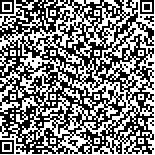| 引用本文: |
张仕娜,高远,郑爱华,晏峻峰.中医厥证领域本体构建研究[J].湖南中医药大学学报,2024,44(3):427-434[点击复制] |
|
| |
|
|
| 本文已被:浏览 1624次 下载 842次 |
| 中医厥证领域本体构建研究 |
| 张仕娜,高远,郑爱华,晏峻峰 |
| (湖南中医药大学中医学院, 湖南 长沙 410208;湖南中医药大学第二附属医院重症医学科, 湖南 长沙 410005;湖南中医药大学信息科学与工程学院, 湖南 长沙 410208) |
| 摘要: |
| 目的 利用本体技术实现中医厥证领域知识的共建、共享及推理。方法 提取中医文献中的厥证相关知识,使用斯坦福大学提出的本体构建“七步法”,基于Protégé工具构建中医厥证领域本体,实现厥证相关知识的领域建模,并进行内部一致性检验,实现本体的推理功能。结果 构建的中医厥证领域本体共有27类,585个实例,25个对象属性,其中反向属性6个,数值属性1个,均通过了一致性检验,实现厥证领域知识的语义化表达,完成厥证知识的共建、共享和推理。结论 本研究采用本体技术,促使中医厥证领域知识的融合重组与推理,为将来中医急危重症诊疗知识库的构建、中医急危重症应急决策和辅助诊疗等系统的建立,奠定基础并提供参考。 |
| 关键词: 中医急危重症 厥证 证型 症状 语义网络 领域本体 智能决策 |
| DOI:10.3969/j.issn.1674-070X.2024.03.011 |
| 投稿时间:2023-04-10 |
| 基金项目:国家自然科学基金面上项目(82274588);湖南省教育厅重点项目(21A0250);湖南中医药大学研究生创新课题(2022CX02);湖南省研究生科研创新项目(QL20220183)。 |
|
| Domain ontology construction of TCM syncope pattern |
| ZHANG Shina,GAO Yuan,ZHENG Aihua,YAN Junfeng |
| (School of Chinese Medicine, Hunan University of Chinese Medicine, Changsha, Hunan 410208, China;Department of Critical Care Medicine, the Second Hospital of Hunan University of Chinese Medicine, Changsha, Hunan 410005, China;School of Informatics, Hunan University of Chinese Medicine, Changsha, Hunan 410208, China) |
| Abstract: |
| Objective To realize the co-construction, sharing, and reasoning of the domain knowledge of TCM syncope pattern by means of ontology. Methods The knowledge related to syncope pattern in TCM literature was extracted, and the "seven-step method" proposed by Stanford University was used to construct the domain ontology of syncope pattern in TCM based on the Protégé tool and to realize the domain modeling of the related knowledge of syncope pattern. The internal consistency was checked and the reasoning function of its ontology was achieved. Results The constructed domain ontology of TCM syncope pattern had 27 classes, 585 instances, and 25 object attributes, including 6 reverse attributes and 1 numerical attribute, all of which had passed the consistency test. The semantic expression of the domain knowledge of TCM syncope pattern had been realized, and the co-construction, sharing, and reasoning of it had been achieved. Conclusion The use of ontology technology realizes the blending, recombination, and reasoning of the domain knowledge of TCM syncope pattern, which lays the foundation and provides reference for the further construction of the knowledge base for the diagnosis and treatment, the establishment of the emergency decision-making system and the auxiliary diagnosis and treatment system for acute and critical illnesses in TCM. |
| Key words: acute and critical illness in TCM syncope pattern pattern symptom semantic network domain ontology intelligent decision-making |
|

二维码(扫一下试试看!) |
|
|
|
|




